Origin of Species and Macroevolution Concepts
1/61
There's no tags or description
Looks like no tags are added yet.
Name | Mastery | Learn | Test | Matching | Spaced |
|---|
No study sessions yet.
62 Terms
Macroevolution
The study of evolutionary changes that produce new species and groups of species.
Species
A group of related organisms that share a distinctive set of attributes in nature.
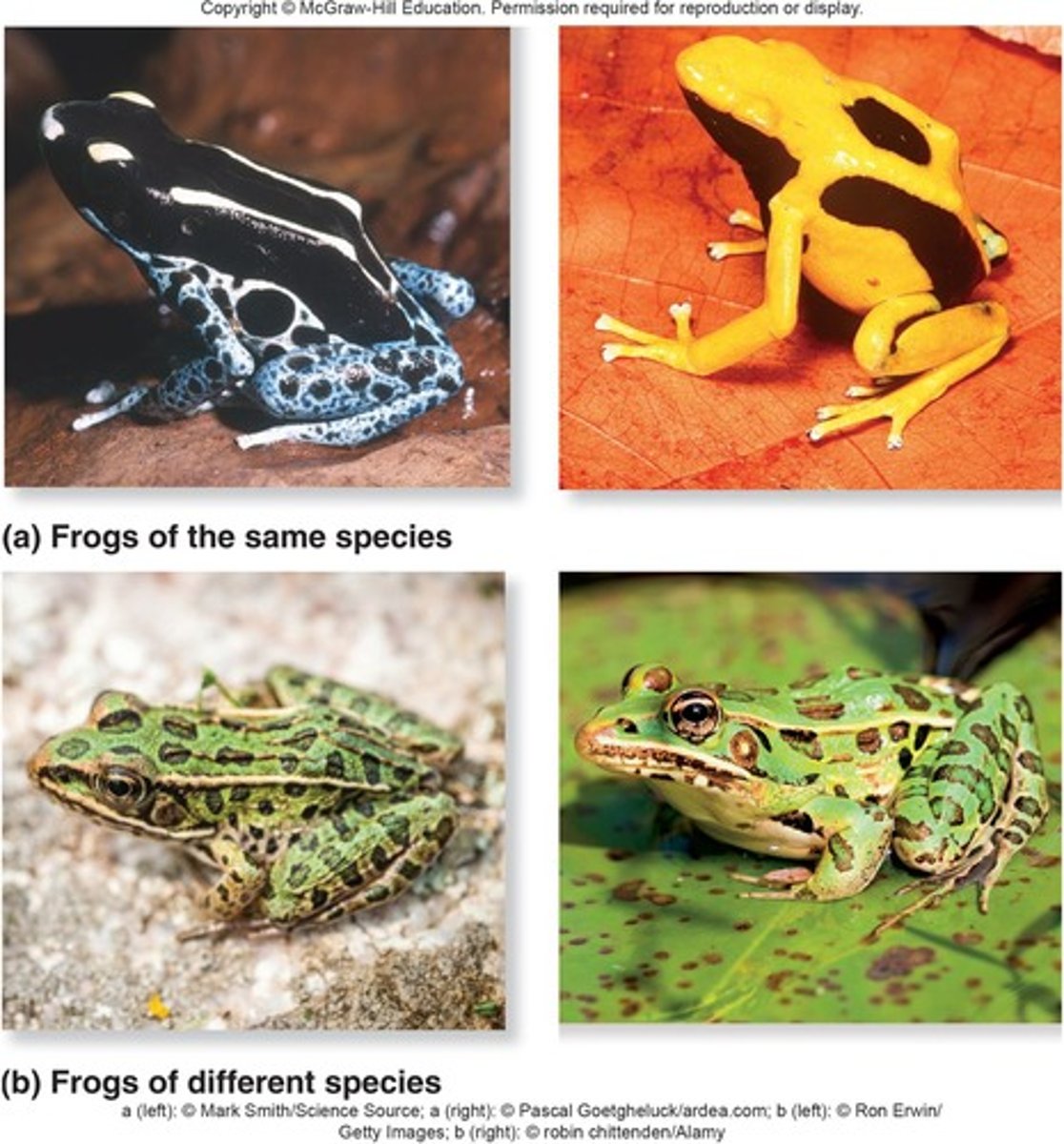
Speciation
The process of generating a new species, typically occurs by the accumulation of microevolutionary changes.
Biological Species Concept
Proposed by Ernst Mayr, it defines species based on the ability to interbreed and produce fertile offspring.
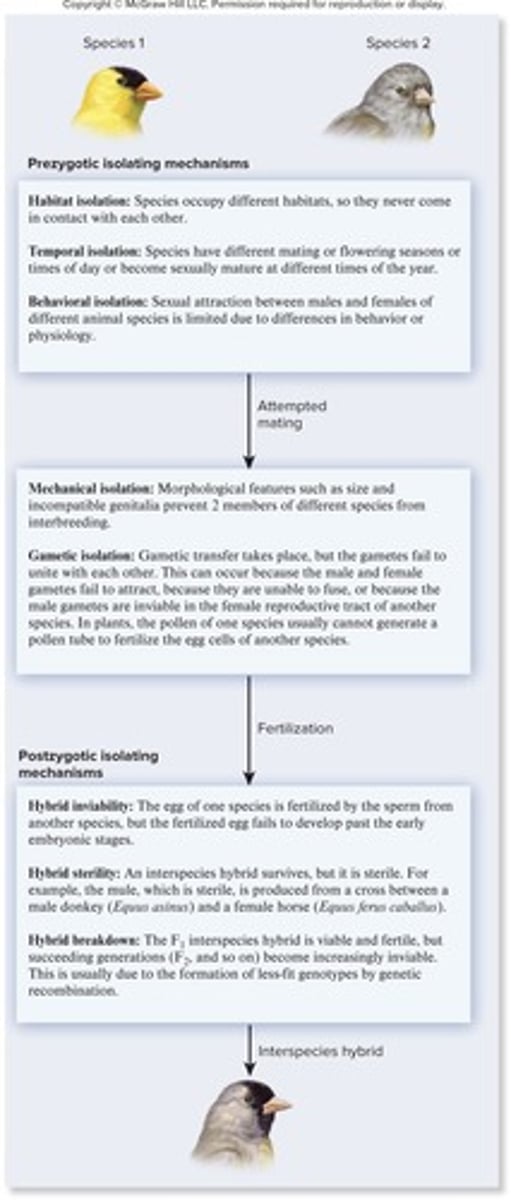
Morphological Traits
The physical characteristics of members of a population used to classify them as the same species.
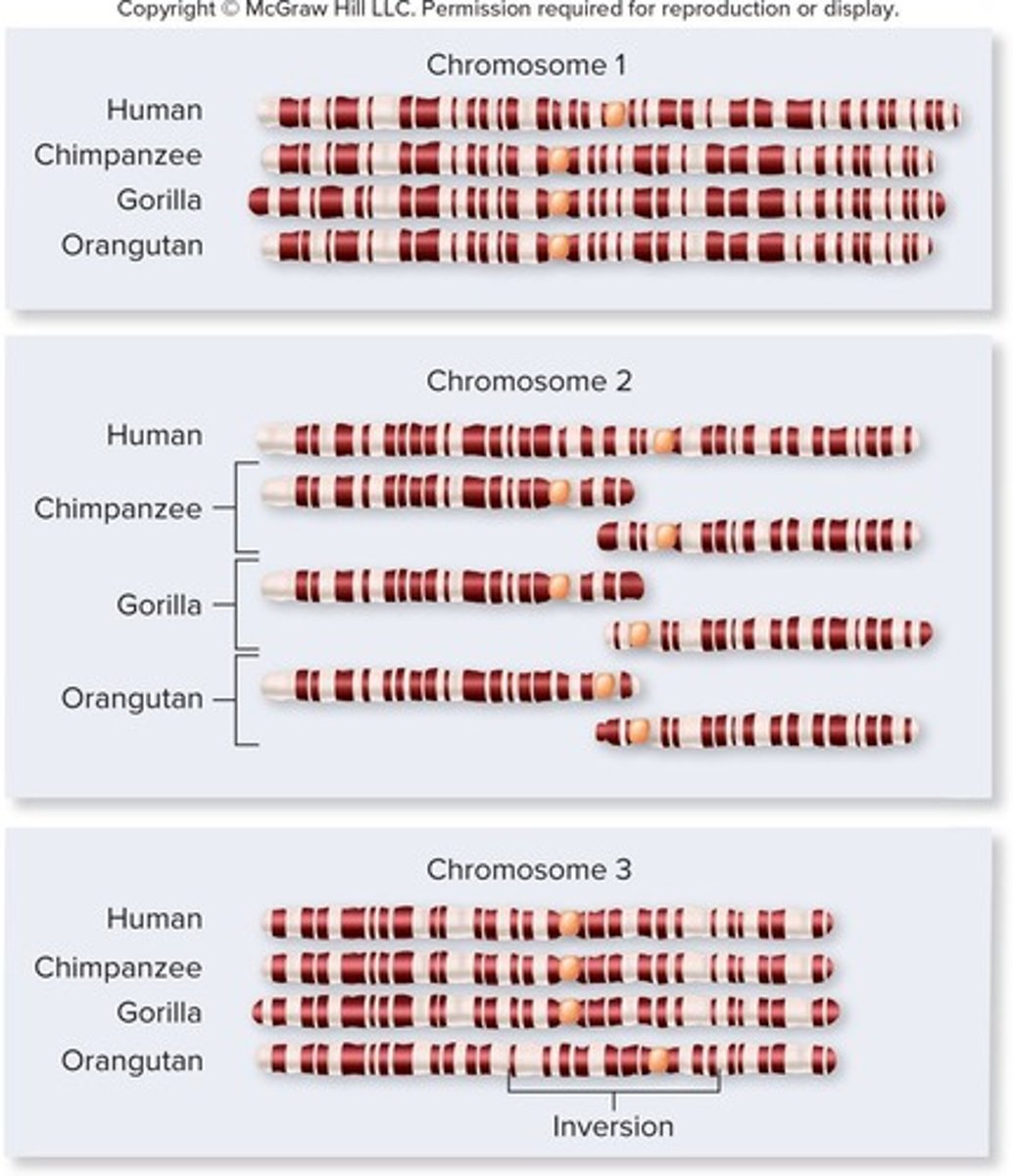
Reproductive Isolation
Prevents one species from successfully interbreeding with another species.
Prezygotic Barriers
Mechanisms that prevent fertilization from occurring.
Postzygotic Barriers
Mechanisms that occur after fertilization, affecting the viability or fertility of the offspring.
Allopatric Speciation
Speciation that occurs when populations are geographically isolated.
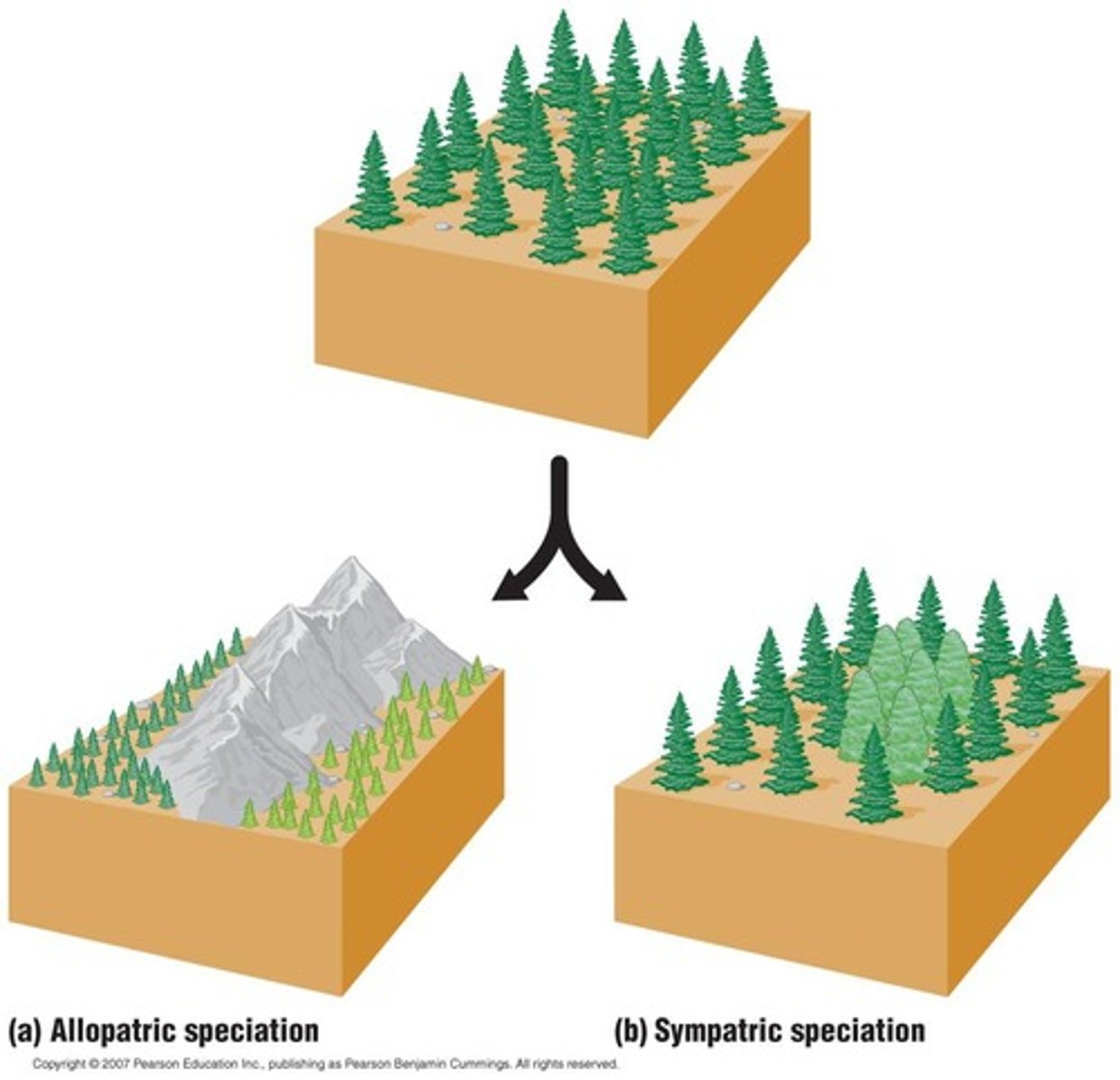
Sympatric Speciation
Speciation that occurs without geographic isolation, often through mechanisms like polyploidy.
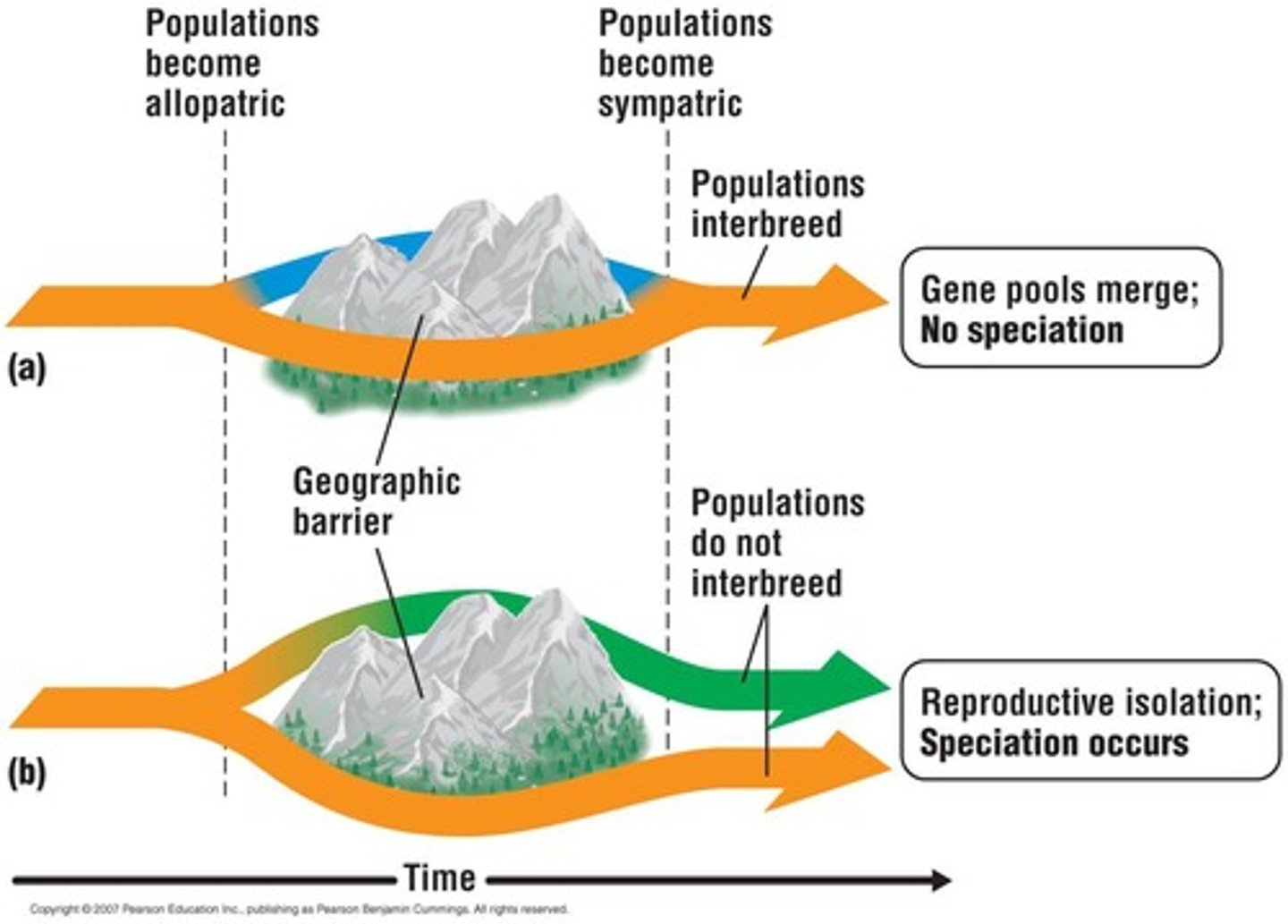
Geographic Isolation
A key factor in allopatric speciation, where physical barriers separate populations.
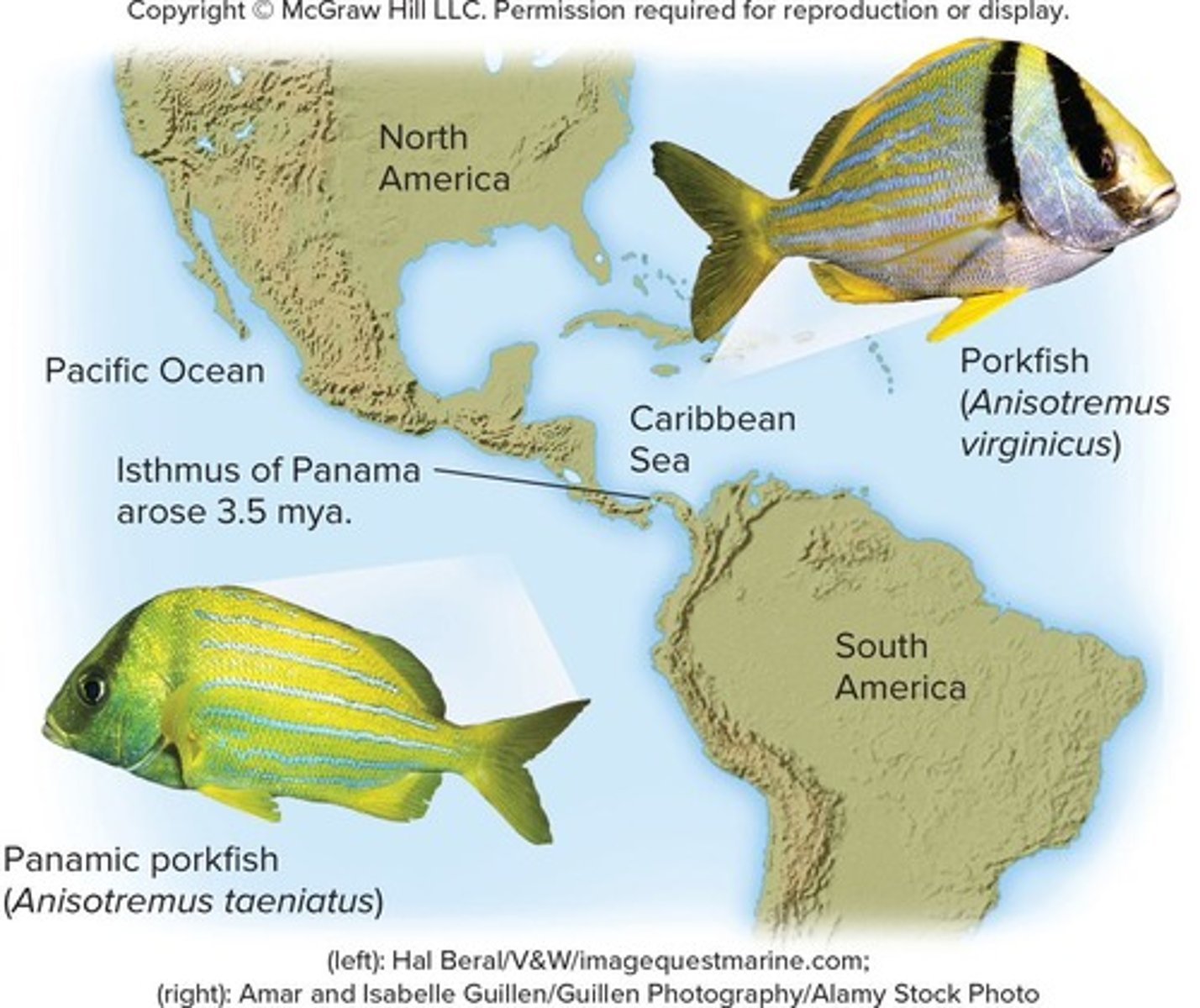
Molecular Features
Genetic characteristics used to determine species relationships.
Ecological Factors
Environmental aspects that can influence the classification and identification of species.
Evolutionary Relationships
The connections between species based on their evolutionary history.
Microevolutionary Changes
Small-scale evolutionary changes within a species that can lead to speciation.
Distinctive Attributes
Unique characteristics shared by members of the same species.
Interbreeding Potential
The ability of members of the same species to reproduce and produce fertile offspring.
Asexual Species
Species that reproduce without sexual reproduction, such as bacteria.
Extinct Species
Species that no longer exist and cannot be studied through reproductive isolation.
Stability and Change in Evolution
The overarching history of life characterized by stability, change, lineages arising, and extinction.
Molecular Features
Properties and characteristics used to compare similarities and differences among different populations, including DNA nucleotide sequences of genes, gene order/location along chromosomes, chromosome structure, and chromosome number.
Ecological Factors
Factors related to an organism's habitat that can be used to distinguish one species from another, including food resources and growth conditions.
Evolutionary Relationships
Utilizing evidence like fossils and DNA samples to compare similarities and differences among different populations, suggesting evolutionary relatedness.
Biological Species Concept
A species is defined as a group of individuals whose members have the potential to interbreed in nature to produce viable, fertile offspring, but cannot interbreed with members of other species.
Reproductive Isolation
The existence of biological factors (barriers) that prevent one species from successfully interbreeding with a different species.
Prezygotic Mechanisms
Reproductive isolating mechanisms that prevent the formation of a zygote.
Evolutionary Lineage Concept
Members of a species have shared in an evolutionary process and an evolutionary history.
Ecological Species Concept
Members of a species are adapted to a particular set of resources (niche) in the environment, explaining differences in form and behavior as adaptations to resource availability.
General Lineage Concept
All modern species concepts are variants of a single general concept of species, using species criteria that provide contingent properties and standards for judging whether an entity qualifies as a species.
Drawbacks of Molecular Features
It may be difficult to draw the line when separating groups based on molecular features.
Drawbacks of Ecological Factors
Different groups may display very similar growth characteristics, and even the same species may show great variation in the growth conditions it will tolerate.
Common Ancestor
If two organisms share an evolutionary relationship, it means they have a common ancestor on the evolutionary tree.
Genetic Exchange
A biological species is the largest set of populations in which genetic exchange is possible and that is genetically isolated from other populations.
Morphological Similarities
Similarities and differences used to distinguish different species that may look morphologically similar.
Species Classification Debate
Questions whether organisms are truly divided into discrete units called species or if this classification is an arbitrary attempt to impose order on the natural world.
DNA Sequences
Used as a property to compare similarities and differences among different populations in molecular features.
Chromosome Structure
A characteristic used in molecular features to compare different populations.
Chromosome Number
A property used in molecular features to compare similarities and differences among populations.
Gene Order/Location
A characteristic used in molecular features to compare different populations.
Fossils
Evidence used in evolutionary relationships to compare similarities and differences among populations.
Amino Acid Sequence
A comparison from Chapter 22 related to molecular features.
Postzygotic
Block development of a viable and fertile individual after fertilization has taken place.
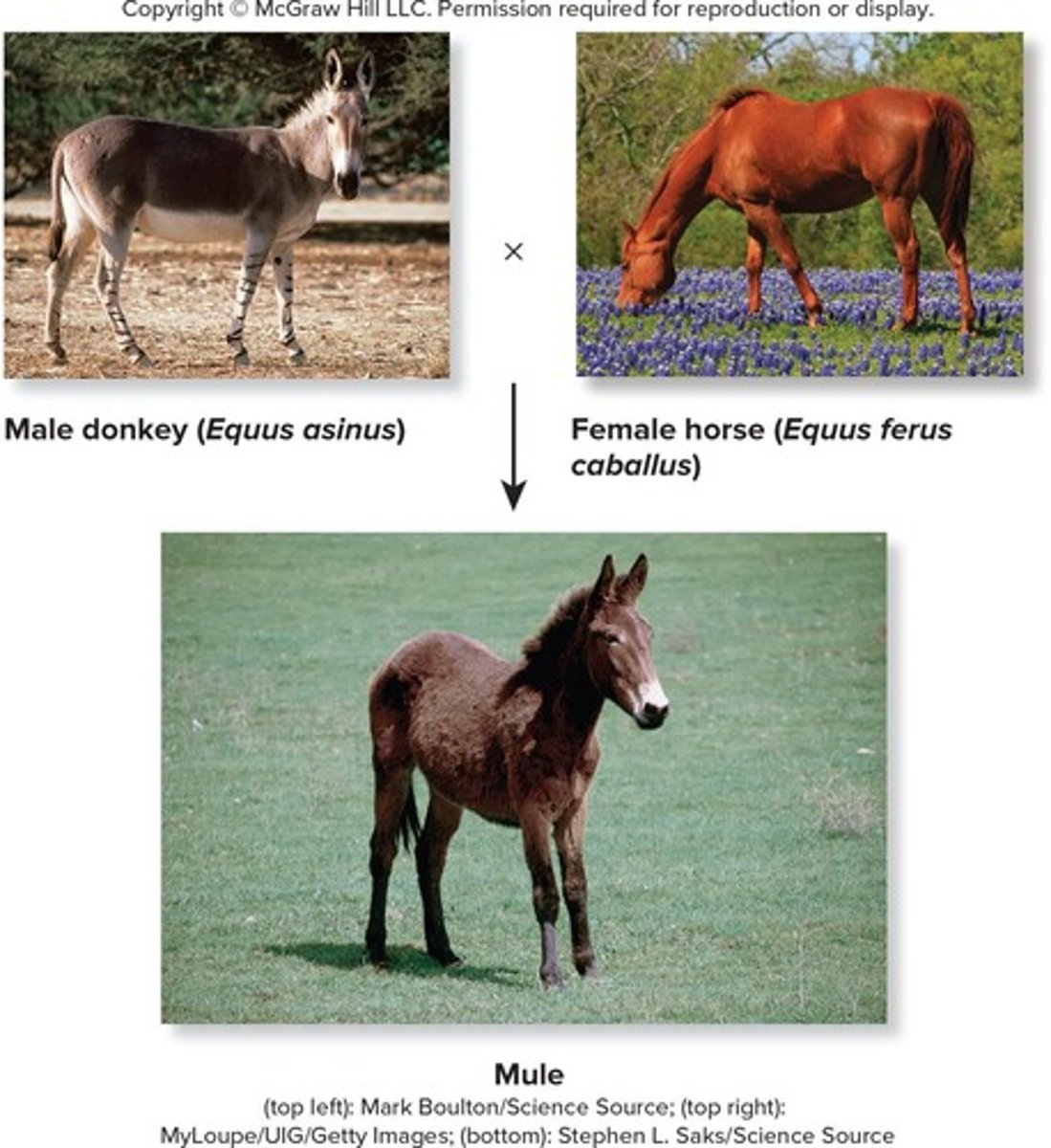
Prezygotic Isolating Mechanisms
Five types of mechanisms that impede mating or hinder fertilization.
Habitat isolation
Two species encounter each other rarely, or not at all, because they occupy different habitats.
Temporal isolation
Species reproduce at different times of the day, different seasons, or different years.
Behavioral isolation
Courtship rituals and other behaviors unique to a species act as reproductive barriers.
Mechanical isolation
Morphological differences, such as size or incompatible reproductive organs prevent two species from interbreeding.
Gametic isolation
Two species attempt to interbreed, but the gametes of one species may not be able to fertilize the gametes of the other species.
Postzygotic Isolating Mechanisms
Three types of mechanisms that prevent the hybrid zygote from developing into a viable, fertile adult.
Hybrid inviability
Gamete of one species is fertilized by a gamete from another species, but fertilized egg cannot develop past early embryonic stages.
Hybrid sterility
Hybrid is viable, but sterile (ex. mule).
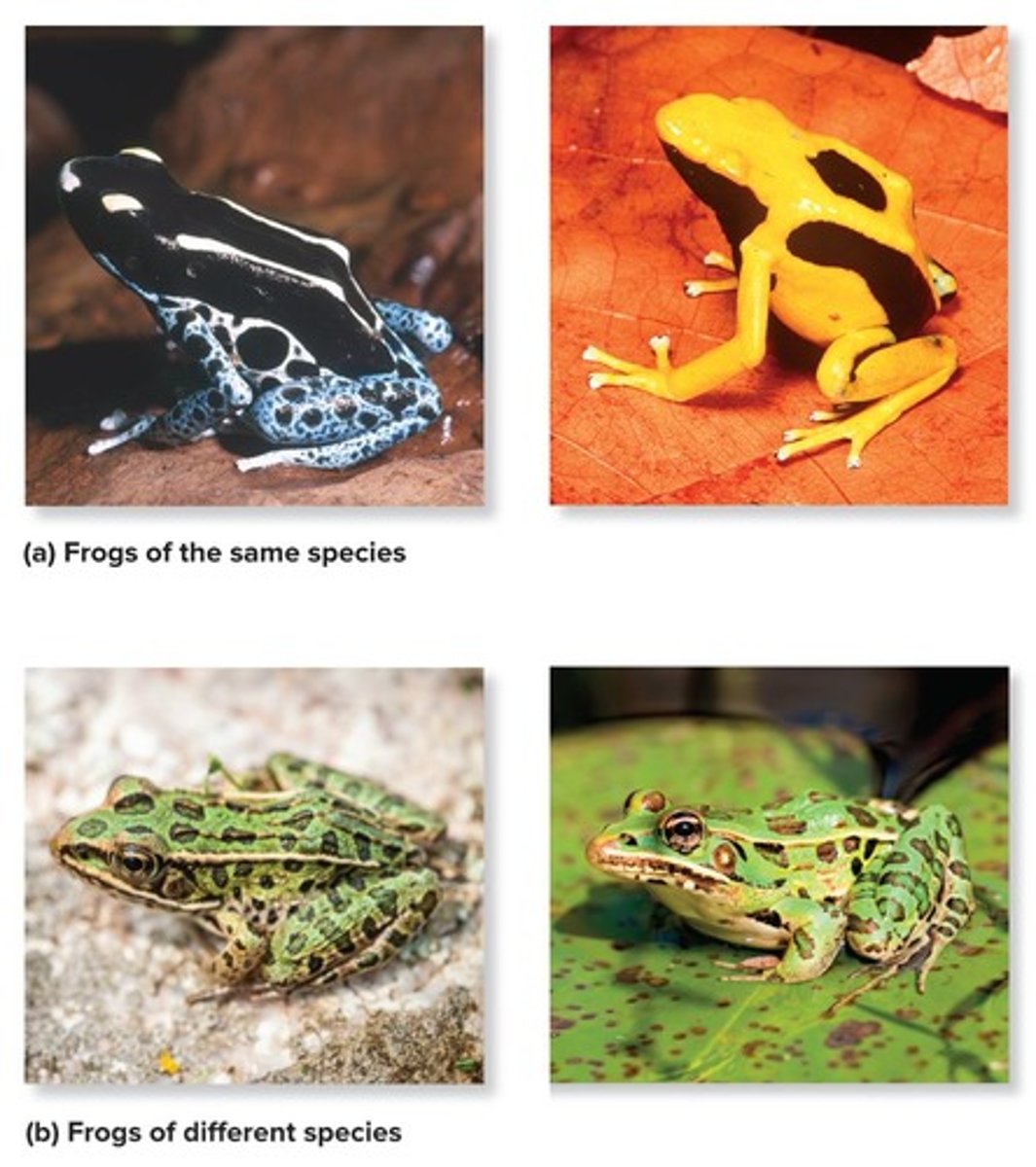
Hybrid breakdown
Some first-generation hybrids are fertile, but their offspring have genetic abnormalities that are detrimental.
Speciation
The formation of a new species due to the accumulation of genetic changes.
Geographic isolation
Speciation can occur when gene flow is interrupted or reduced due to a population becoming isolated.
Allopatric speciation
Speciation that occurs when a population becomes isolated from other populations.
Founder effect
Isolation can lead to the founder effect, since not all alleles will likely be represented by the new population.
Sympatric speciation
Speciation that takes place in geographically overlapping populations without physical barriers to interbreeding.
Reproductive isolation
Any process that results in reproductive isolation of a portion of a species could lead to speciation.
Chromosome changes
Likely mechanisms for speciation under sympatric conditions.
Nonrandom mating
A likely mechanism for speciation under sympatric conditions.
Microevolution
Small-scale evolutionary changes within a species.
Macroevolution
Large-scale evolutionary changes that occur over long periods.